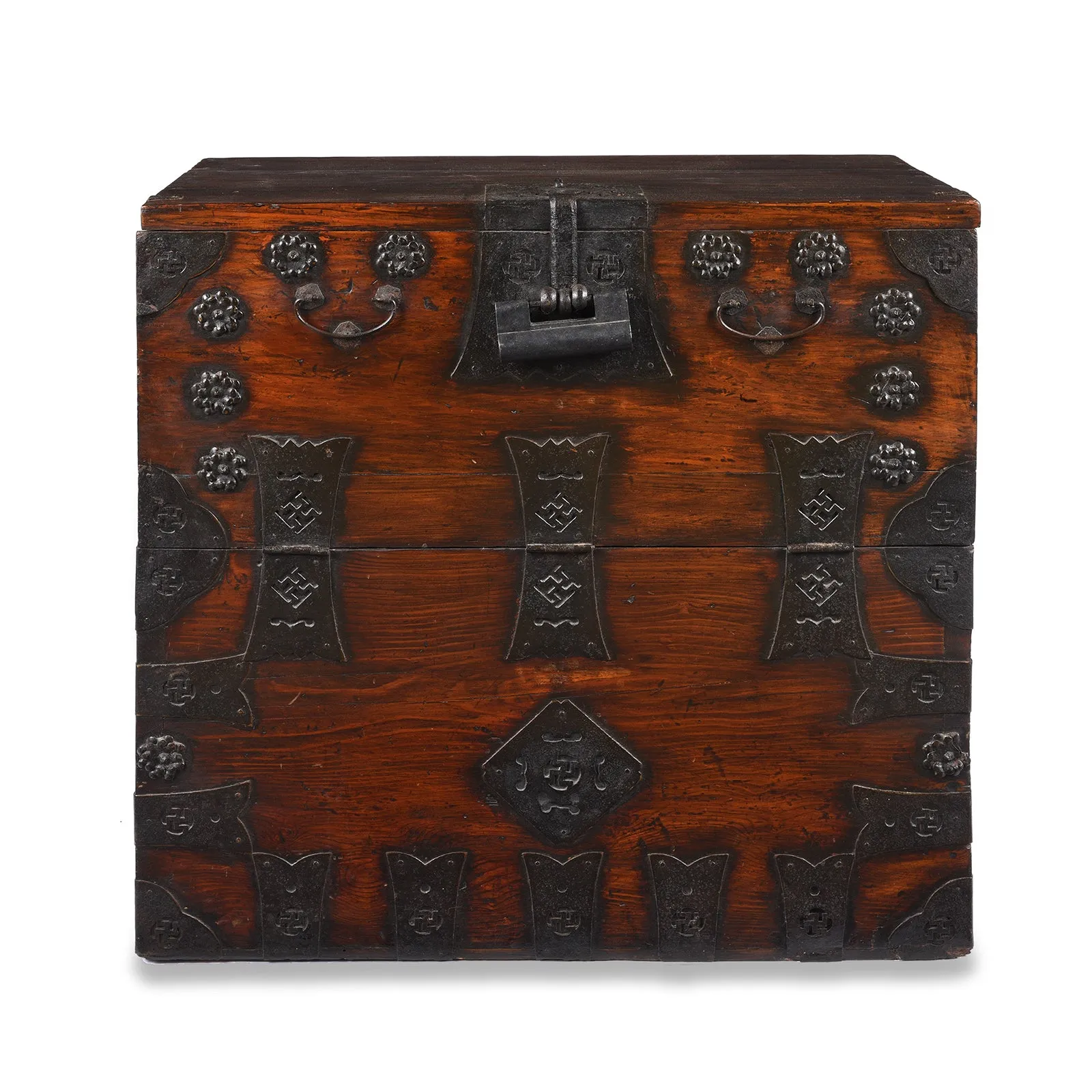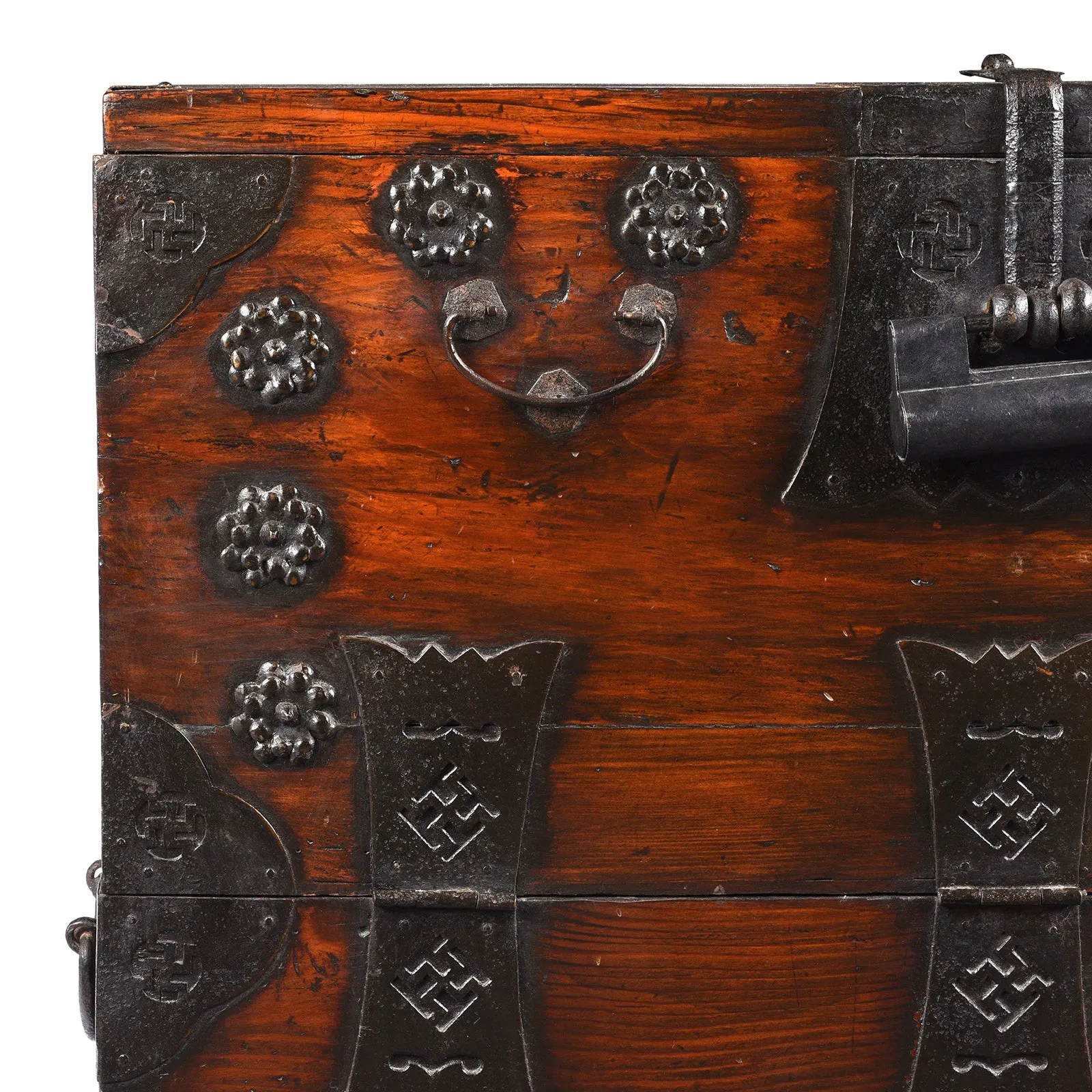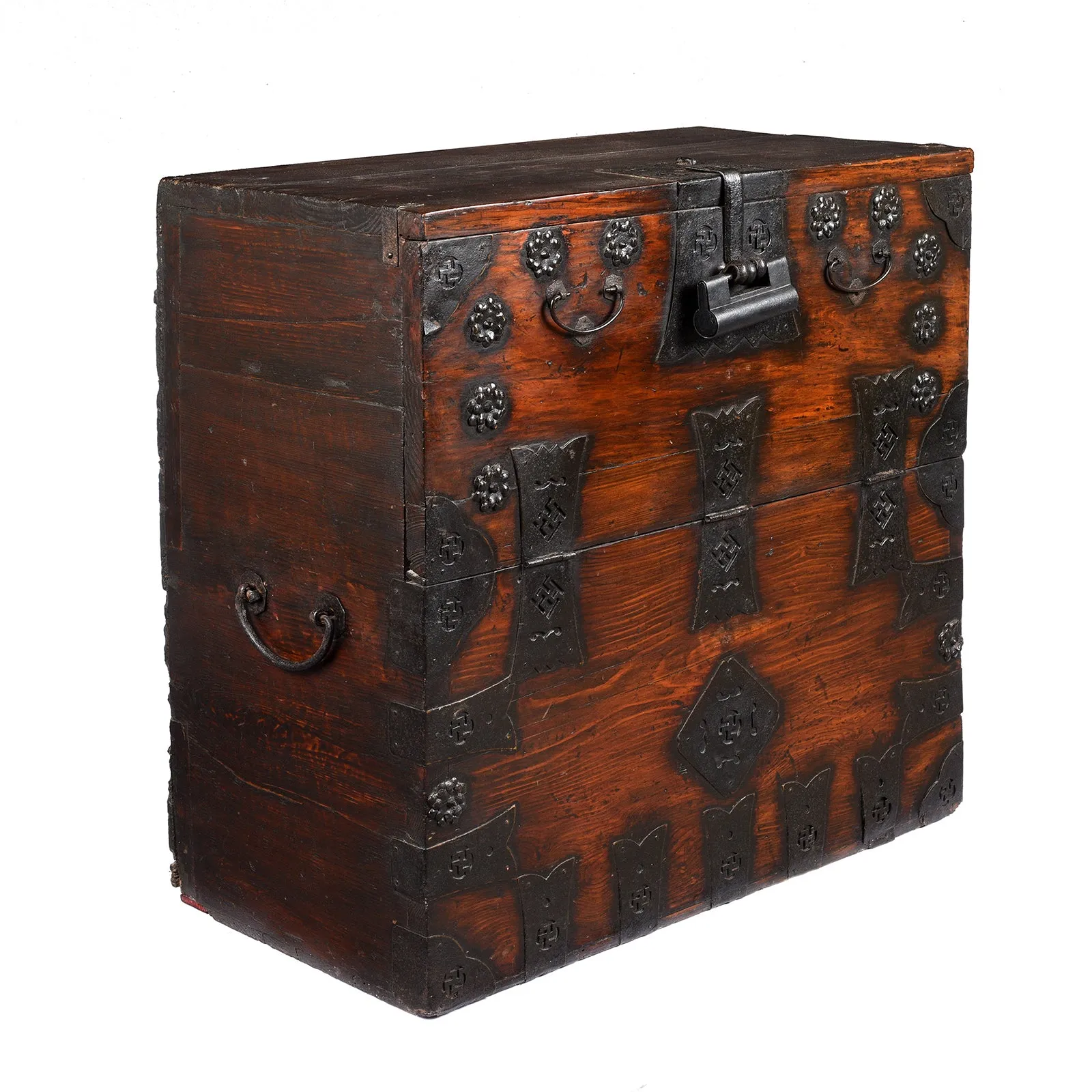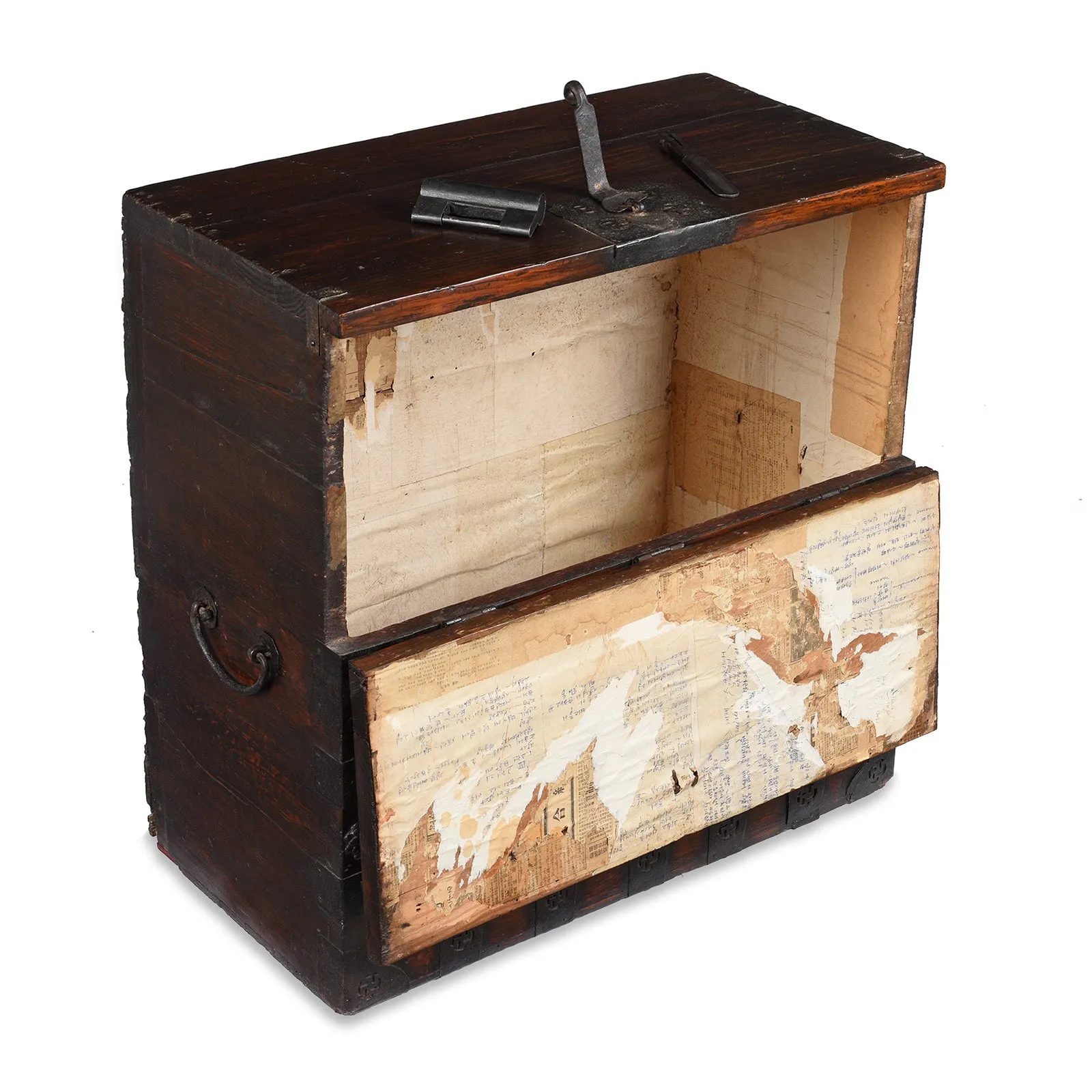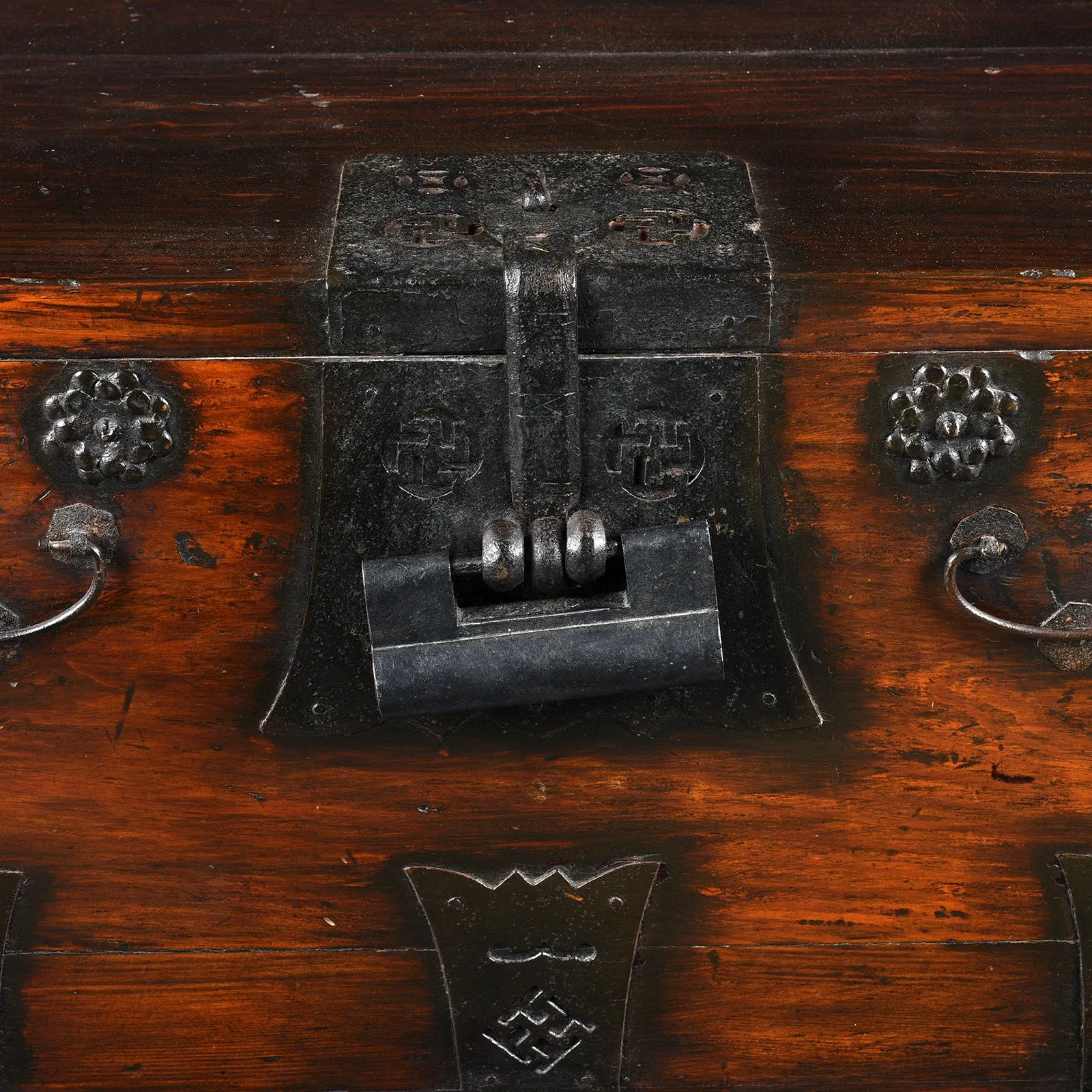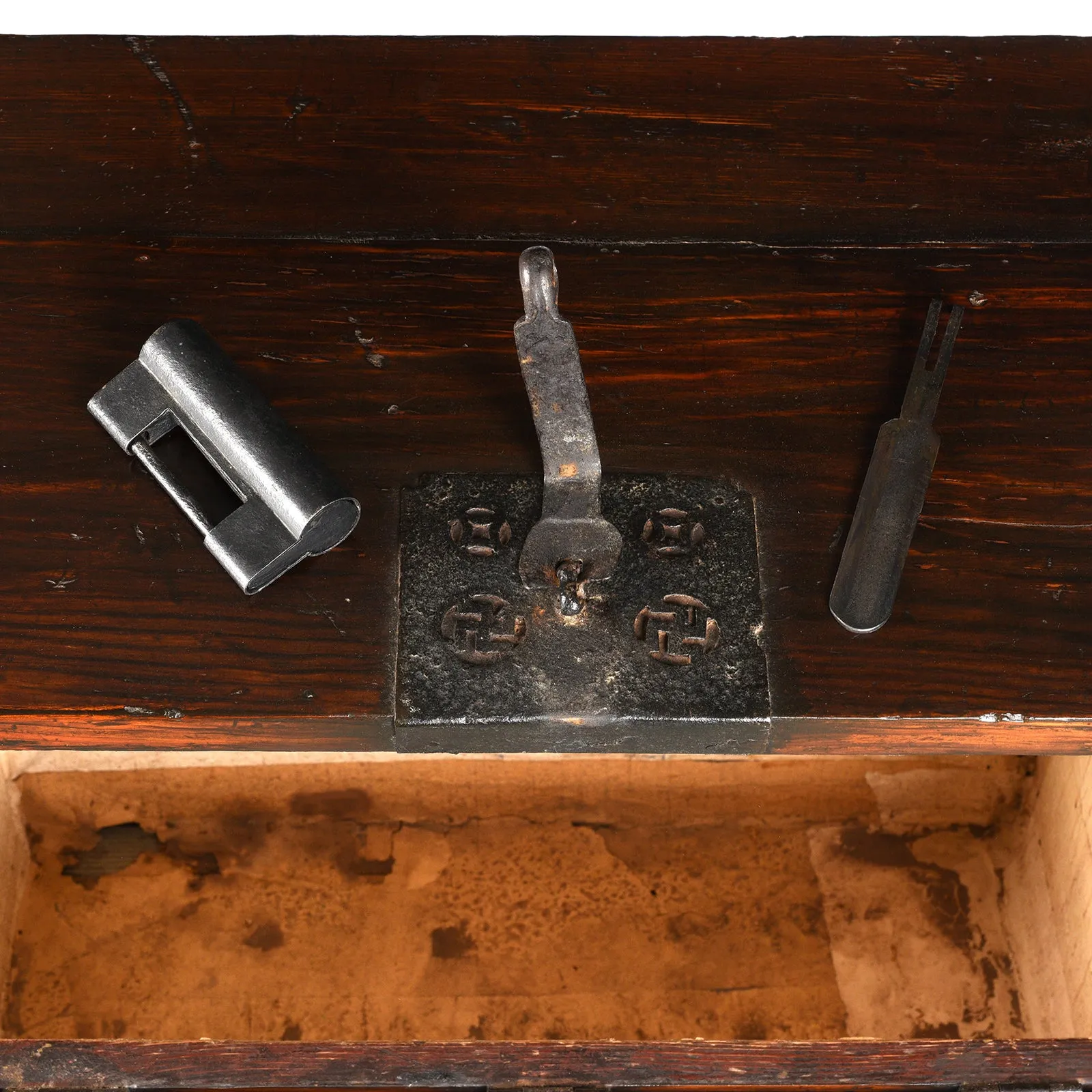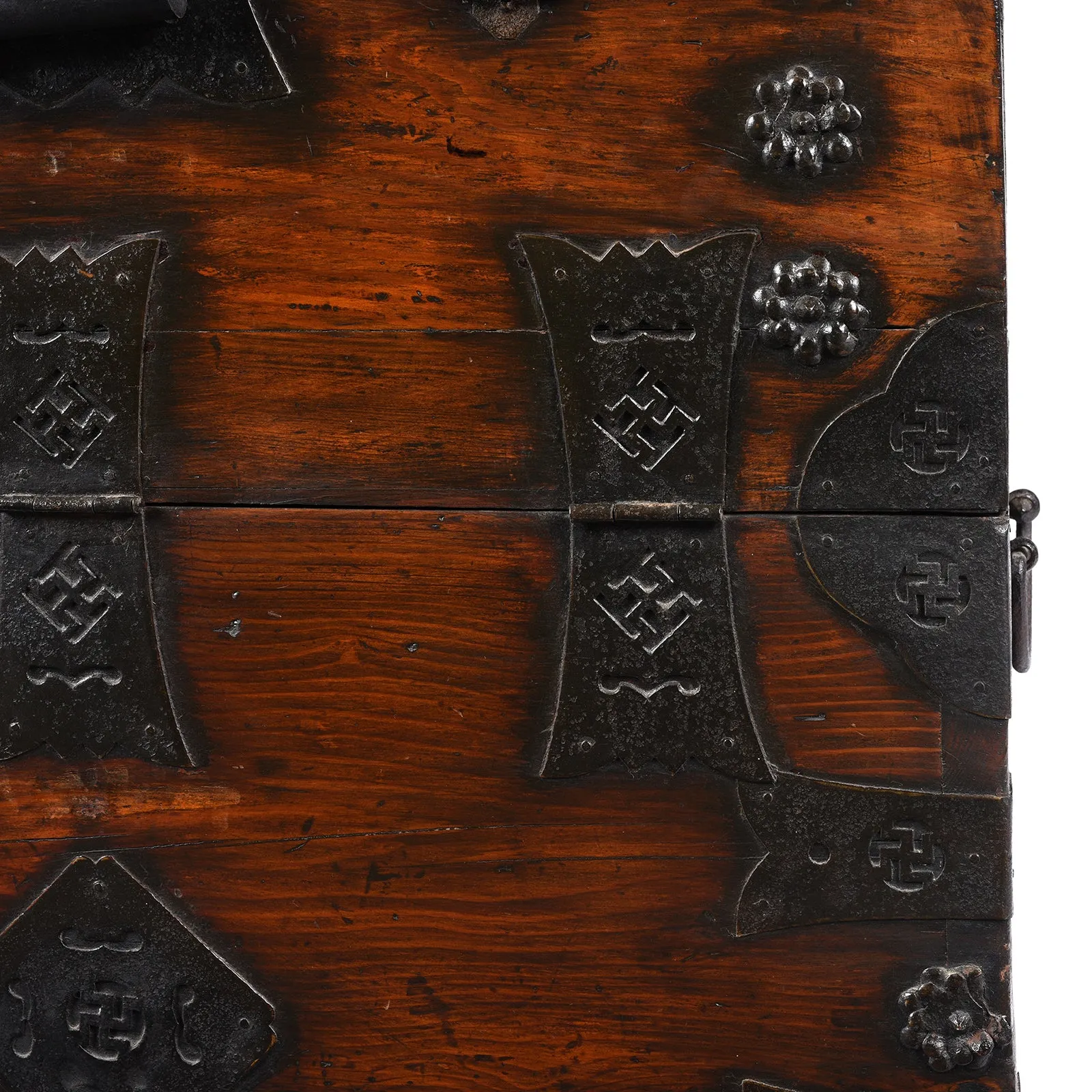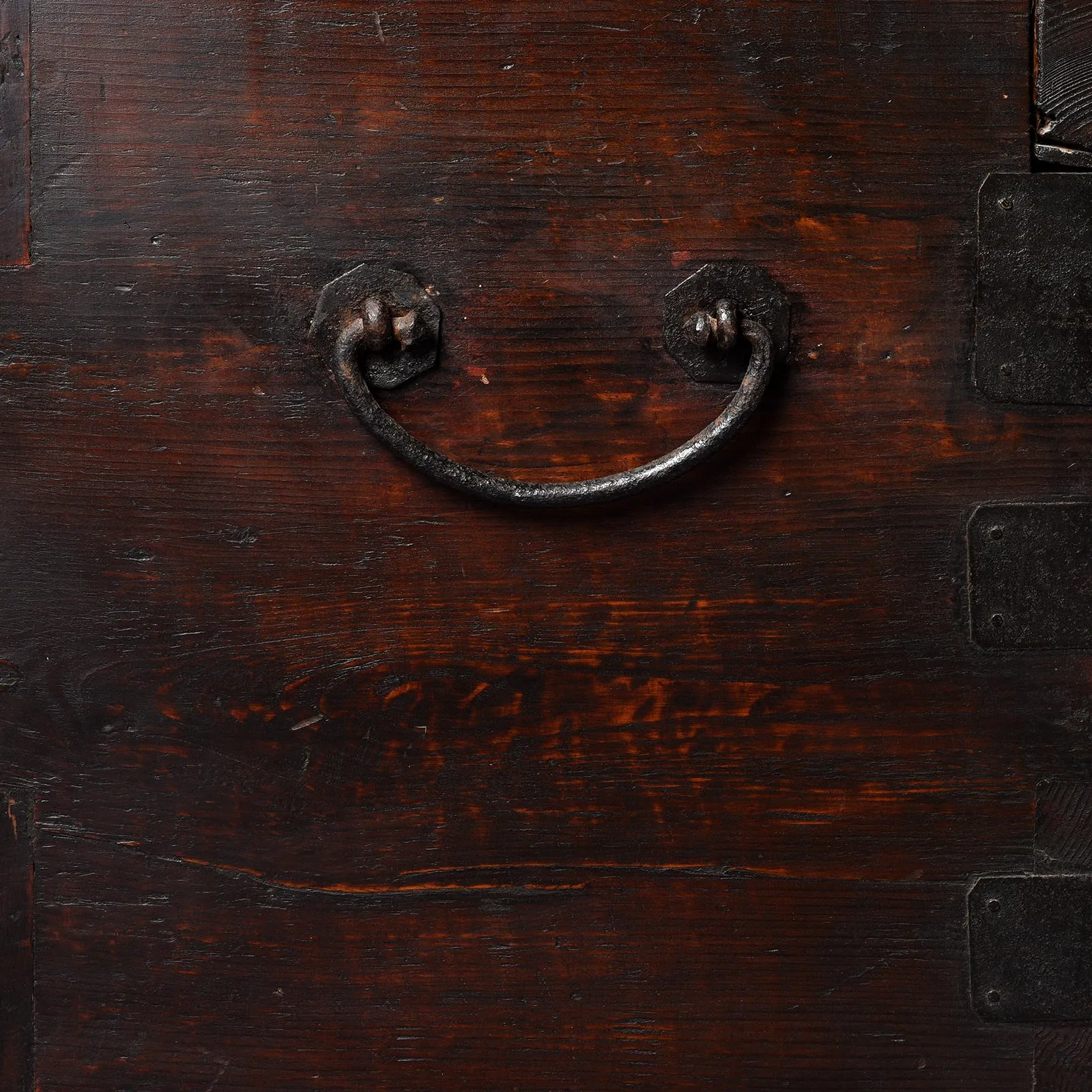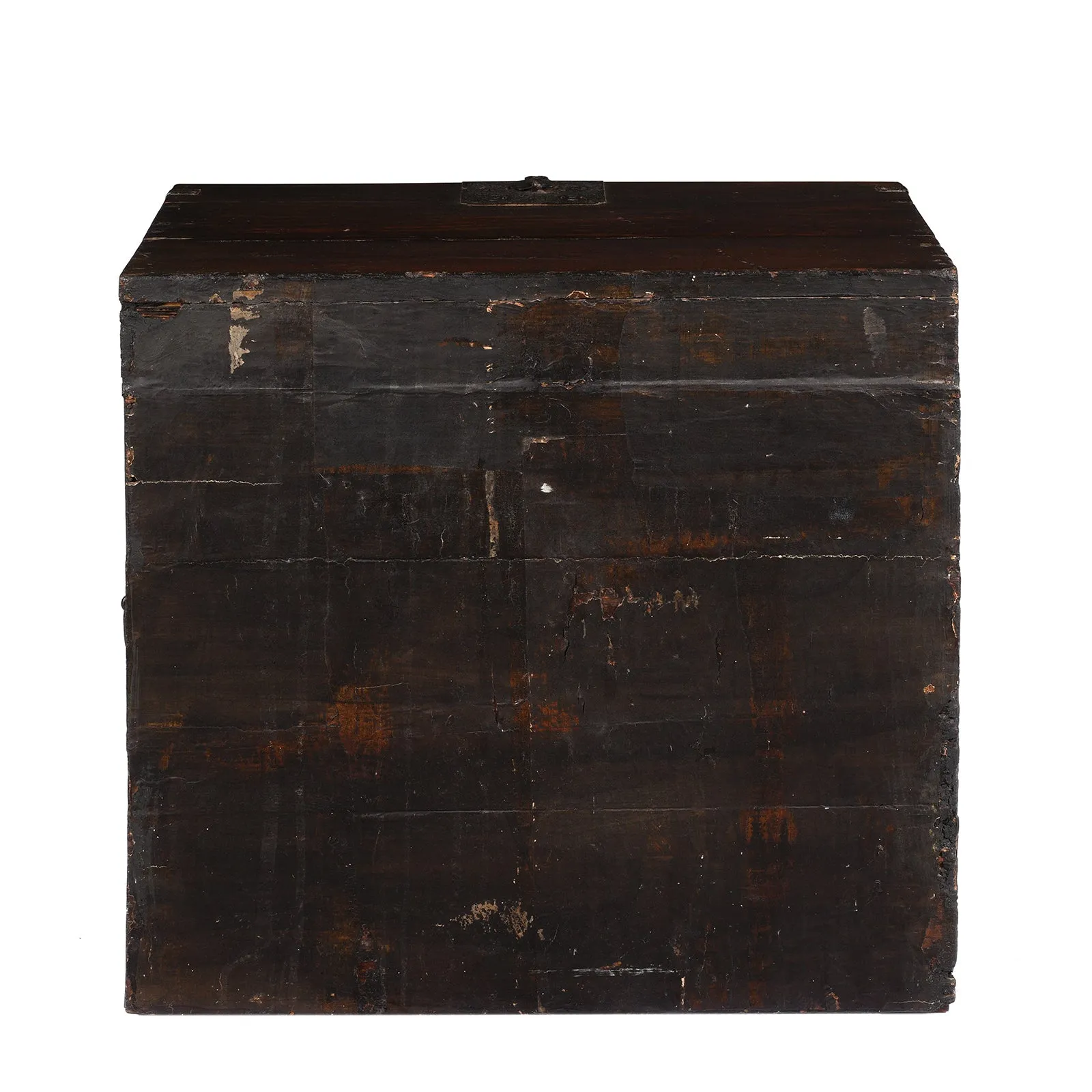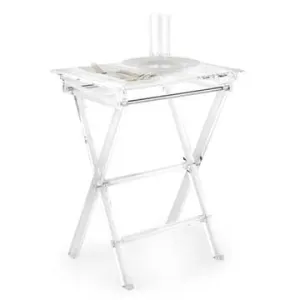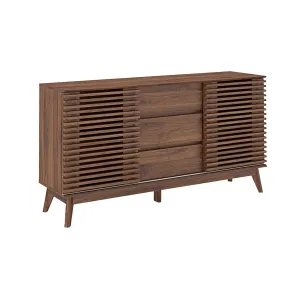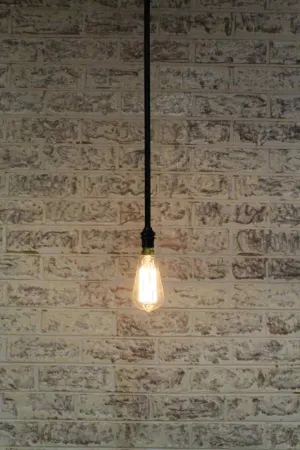This antique Korean bandaji (반닫이) is from Yangsan in Gyeongsang-do province, South Korea. It dates to the Joseon dynasty (1392–1897), specifically the 19th century and is constructed from red pine wood. Yangsan bandaji were the most popular and expensive type of bandaji in Gyeongsang-do province and have their own distinct style; having thick and splendid metalwork often utilizing Chinese symbols. Here you see the traditional swastika or manja used.
Korean bandaji chests were used as blanket and clothing chests. Clothes were usually stored inside and folded blankets on top. Like this example, almost all bandaji are front opening with a hinged top section folding down. Bandaji literally means 'half closing' in Korean. Korean furniture interiors are often finished internally with hanji, traditional handmade Korean paper made using the inner bark of the mulberry tree. This piece is finished with hanji. The iron is formed with cloud motifs, symbols of longevity which bring desire for success.
This bandaji is slim and compact making it suitable for more compact rooms such as hallways and bathrooms.
References:
Similar examples can be found in the Weisman Art Museum, Minneapolis, USA, The Portland Museum, USA, and Jeju Folklore and Natural History Museum.
From Korea
UK Delivery Charge - except Highlands & Islands £40
More delivery options available at checkout




